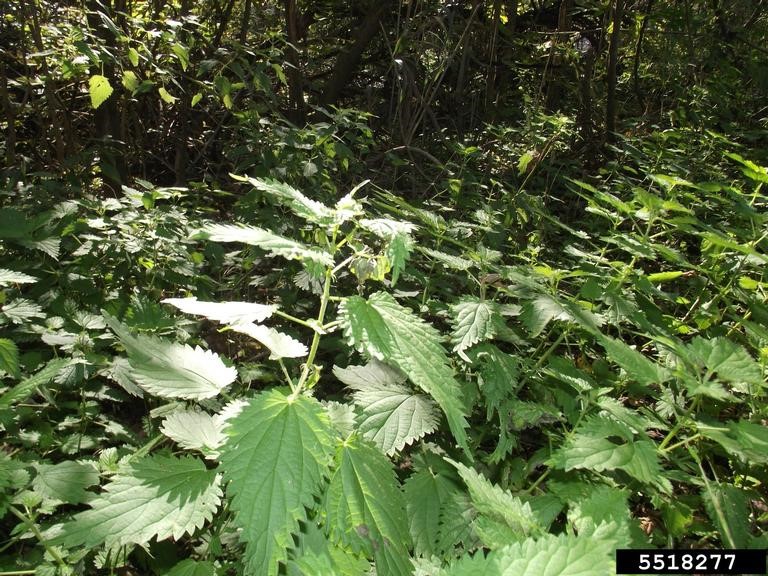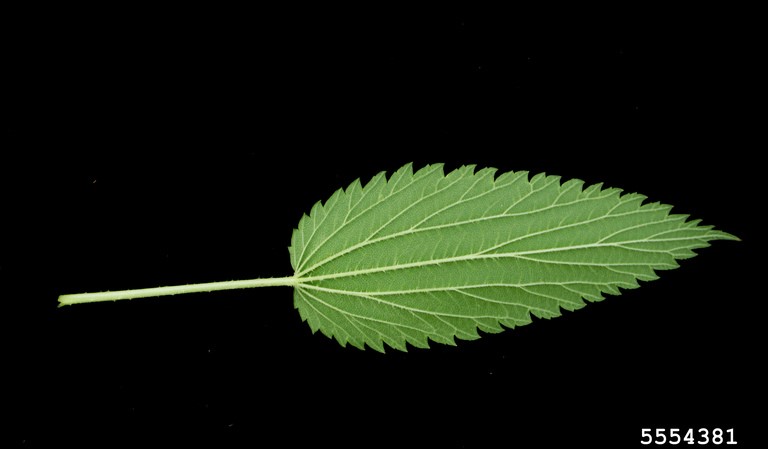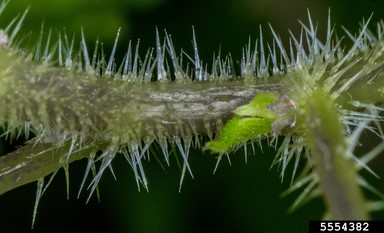Ecology
Stinging nettle is a slow-growing perennial plant native to North America. All of the stinging nettle species have hairs on the stem and leaves that cause discomfort and inflammation to humans.
Some identifying features of stinging nettle are it’s 4-angled, ridged, hairy stem. It can grow up to 9 feet tall with an extensive system of rhizomes. Leaves are oval-shaped, toothed, and oppositely arranged on the stem. Both sides of the leaves are covered in hairs; leaves on the upper surface tend to be appressed, or flattened, while the bristly, stinging hairs occur mostly along the three main veins on the lower leaf surface. Stinging nettle flowers are inconspicuous and produced at the base of leaves on the upper branches. Male and female flowers grow on separate plants. Stinging nettle is typically found in disturbed, shady sites with moist but well-drained soils having high fertility.
The chemicals in the stinging hairs that cause the irritation are acetylcholine, histamine, and serotonin. Some suggest that applying rubbing alcohol to the affected area can relieve irritation. Large doses of these chemicals can cause respiratory distress and irregular heartbeat.
Management
Research reports suggest that fall or spring applications of glyphosate or applications of oxyflurofen (Colide, Galigan, Goal, others) to small, actively growing plants will control stinging nettle. Other research suggests that vigorous turfgrass will outcompete stinging nettle. Because stinging nettle is adapted to disturbed areas, population increases were observed after burning rangeland.



